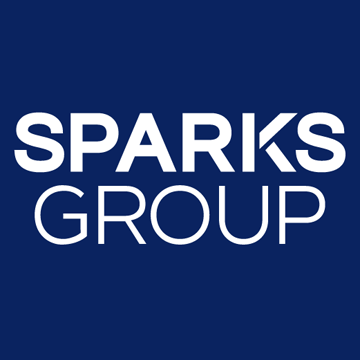
When writing job descriptions for diversity, every word matters, especially when the way hiring teams phrase qualifications can directly affect what candidates apply for each position. Hiring managers may unintentionally include language that’s biased against a particular gender, race, or the level of worker, which can make it harder to attract top talent from those groups of people and can prolong the recruitment process. While it can be hard to catch at first, there are several strategies that organizations can use to consistently identify and weed out exclusionary job posting language.
The Importance of Diversity and Inclusion in Job Descriptions
Organizations that create more inclusive job descriptions remove employment barriers for job applicants from diverse backgrounds. By using language that resonates with a larger audience, hiring teams can bring in new perspectives and unique experience that can help support business growth objectives.
Businesses promoting diversity recruitment stand to gain several advantages:
- A stronger perceived brand image
- Access to new skills and experience
- 2.3 times the cash flow per employee and 1.4 times the revenue compared to companies that don’t.1
One effective way to promote diverse recruitment efforts is to partner with a staffing agency experienced in identifying job description bias and expanding candidate outreach to niche talent pools. Agencies can provide strategic guidance on how to eliminate exclusive job requirements and strengthen candidate inclusivity. Sparks Group has 50 years of experience guiding organizations in promoting more diverse hiring practices. If your company is looking for assistance or would like to strengthen your talent pipeline to reach more candidates with unique perspectives you can speak to a diversity recruiter here.
Related Reading: 4 Reasons to Partner With a Staffing Agency Focused on Diversity Recruitment
How to Write Inclusive Job Descriptions
While organizations may not intend to, there is usually some form of unconscious bias within job postings that discourages one gender over another or candidates from certain cultural backgrounds from applying. To address this, hiring teams should:
1. Use Gender-Neutral Language
Gender bias in job descriptions involves unknowingly including language that assumes the applicant is either male or female. Candidates may subconsciously recognize these subtle word choice differences and be less inclined to fill out the application.
When constructing job applications keep the following tips in mind:
- Avoid using gendered naming conventions in job titles. For instance, instead of using “chairman,” use “chairperson.”
- Examine references to company culture, such as referring to “the guys,” which can be off-putting to women applying for the job.
- Don’t refer to the applicant as “he” or “she” when describing their duties and expectations.
When it comes to benefits, be sure to mention “parental leave” instead of just “maternity leave.” - Don’t describe needing a “strong” candidate, as it may imply the candidate should be male.
2. Trim Job Qualifications to Remove Optional Experience
Another major obstacle for expanding gender inclusivity with job postings is the self-perceived qualifications for women compared to men. Research shows that women tend to only apply for a job when they meet 100% of the job requirements, compared to 60% for men.2
To address this, hiring managers should refrain from including non-essential qualifications in the job description, such as the ability to lift up to 25 lbs. Instead, they should state the required experience and skills, and then specify what prerequisites are favorable to have, but not essential.
3. Avoid Corporate Jargon
When talking to professionals within the same industry, it’s common to use acronyms and abbreviations to refer to job-related processes, platforms, and other items. For entry-level candidates and those new to the field, jargony terms can become a significant barrier if they are unfamiliar with them and feel they may be under qualified because of this knowledge gap. Be sure to spell out any acronyms and replace corporate speak with more commonplace language to avoid confusing and excluding professionals who are new to the industry.
Examples of discouraging jargon include referencing “our CMS” instead of writing “our content management system (CMS)” or referring to “SLAs” instead of “service level agreements (SLAs).” Hiring teams should also review any references to required certifications or qualifications to make sure they are spelled out. In the cybersecurity industry this could include Certified Information Systems Security Professional (CISSP) or Certified Ethical Hacker (CEH).
Related Reading: Don't Reject Qualified Candidates: Is a Degree Necessary for Success?
4. Remove Discriminatory Language
Hiring teams looking to write more inclusive job descriptions should be mindful of how the language comes across to members of different ethnic groups. Similar to gender bias, underlying racial or cultural bias can cause candidates to feel unwelcome.
When creating a new job posting, keep the following strategies in mind to eliminate discriminatory language:
- Avoid saying the applicant must be a native English speaker—instead, specify that the candidate must have strong communication skills3
- Don’t restrict academic requirements to degrees from only Ivy League or highly accredited schools
- Instead of asking for “legal citizens only,” request that the candidate is authorized to work in the U.S.
- When mentioning a particular race or country origin, don’t refer to only one portion of an ethnic group (such as saying “Latino” instead of “Latinx”)
Sources:
1. https://joshbersin.com/2015/12/why-diversity-and-inclusion-will-be-a-top-priority-for-2016/
2. https://hbr.org/2014/08/why-women-dont-apply-for-jobs-unless-theyre-100-qualified
3. https://www.seyfarth.com/images/content/6/3/v3/63019/Unconscious-Bias-in-Job-Descriptions.pdf






